by Kevin Nakagawa, CA 2007
8.5" x 11" Glossy card stock, dye based and pigment inks, and a white gel pen.
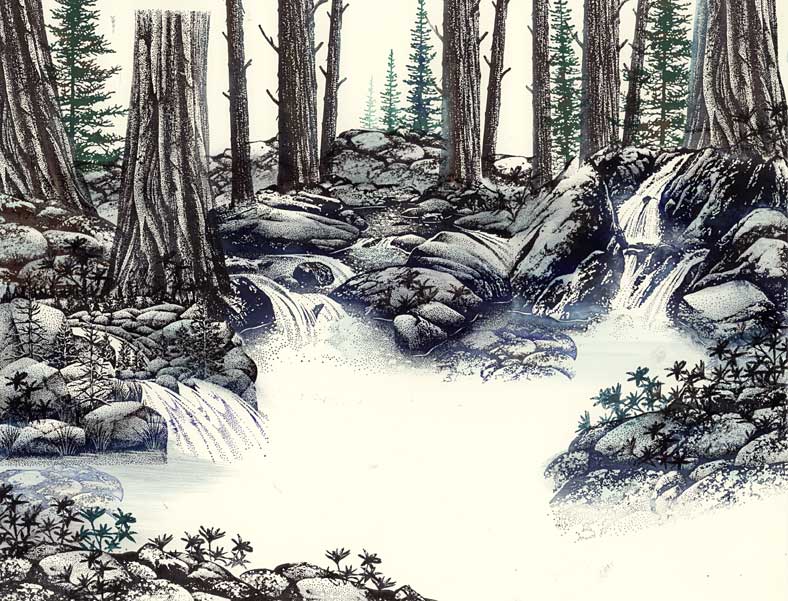
Tree Trunk, Tree Trunk Trio, Boulders with Lichen, Pine Tree, Babling Brook, Brook Falls, Boulders with Lichen Sm., Side Falls Lg., Foliage, and Foliage Lg. make up this composition. At the base of some of the images, where rock meets water, I've removed some of the ink before making the impressions. This provides a head start in the creation of a misty setting. The Colorbox Stylus Tool was used with Cloudy Blue primarily over the rocks. Some of the light areas were retained to represent lighting.
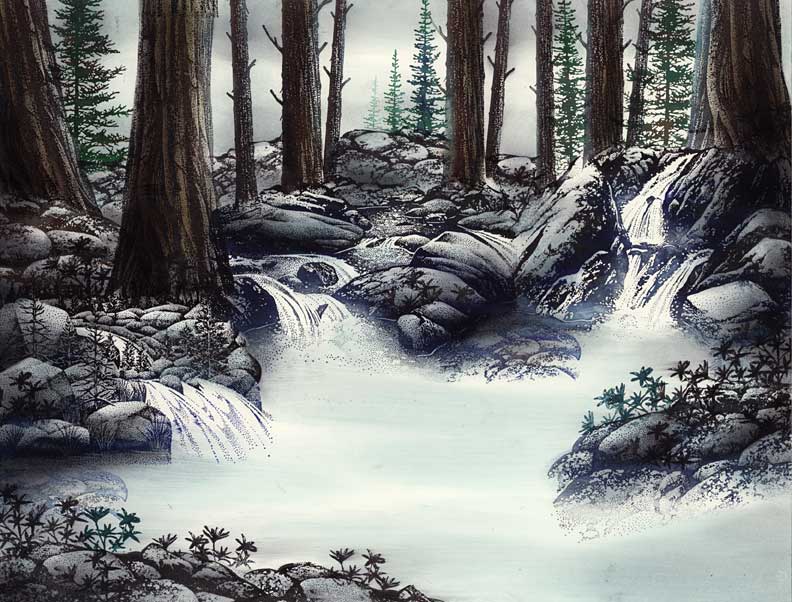
Grey tones were applied to the rocks, brown to the trees, and additional pale blues to the water. Lighting was considered in this process. To turn your objects in space (make them appear three dimensional), retain some of the light as mentioned above. For example, the tree trunks have been shaded on one side and left light on the other. Rocks were shaded at their bases. For variation, retain some of the light areas on your water as well as the sky when applying color.
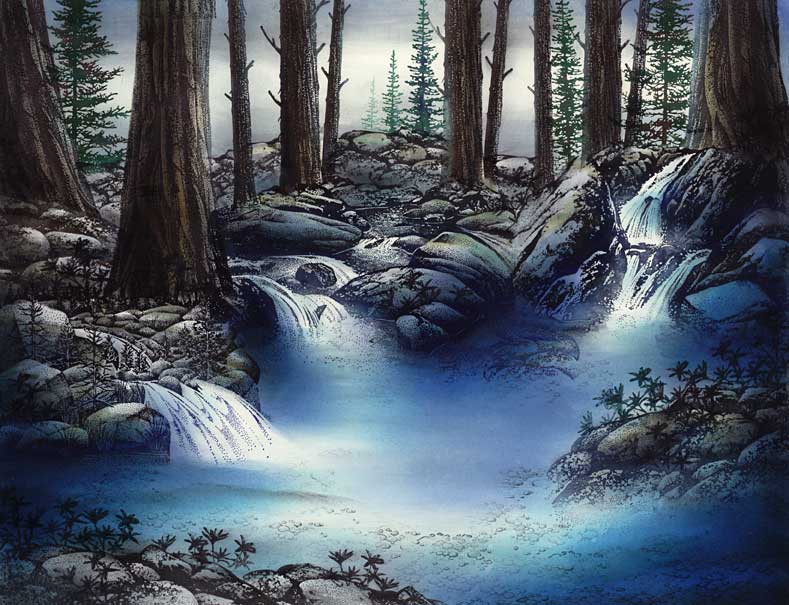
A series of blue values were used in the water with some of them being applied to areas of the rocks. Shades of grey tones were applied to the sky, trees, and rocks using various incarnations of black ink. To achieve lighter grey tones, use a drier version of black ink on your applicator. Blot off the ink until you see a version of grey before applying to your scene. Again, retain your light values on various objects
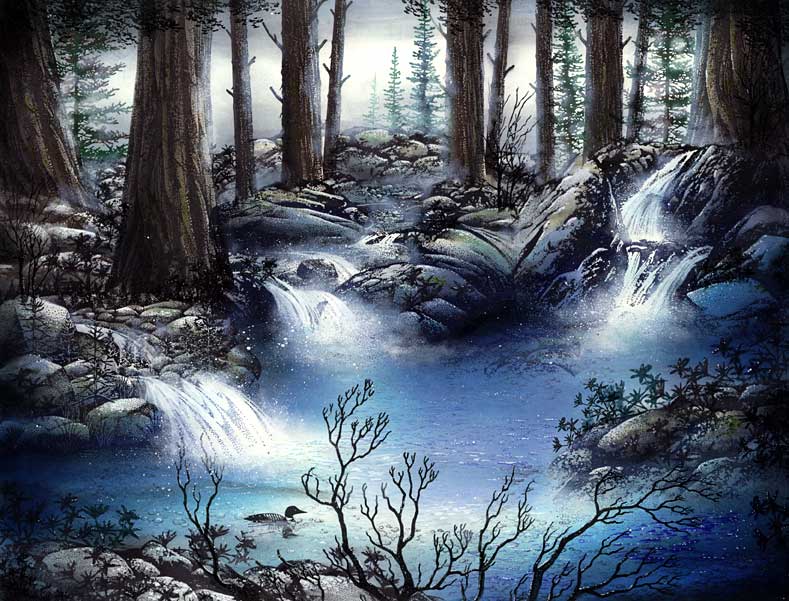
Many times, after applying so many layers of ink to objects, the entire scene begins to take on a soft appearance. I like soft textures but I don't want it over everything. I like a range of textures from the crisp to the diffused. To improve the textural range in this scene, Leafless Limbs was stamped in two locations on the rocks. This is a good image for this as it's airy. It isn't heavy in line weight and you can see through it so it doesn't obscure imagery in the background much. Spooky Branch was used in the foreground. Parts of this design were used in about three impressions. These crisp and dark impressions really play well against the soft range of blues in the water. For the water, I wanted to create some added texture as well and the solution was to use Water Pattern Sm. was stamped in different values of blue. I try and use one or two values darker than the surface color for these textures. Where the water was very dark, such as around the shadows of the rocks, I used the Water Pattern sm. with a Brilliance "white" ink pad for light impressions in dark. Loon w/Reflection was stamped to add a little focal point in the scene.
A Colorbox white pigment ink pad was used with a cotton swab to create a misty appearance at the bottom of the falls. Very thin dry applications of ink are built/layered to create this look. The biggest, and almost, only mistake when trying this technique is when too much ink is on the swabs and thick blotches of paint are applied instead of a difused translucent dry layers. To get this very thin/misty appearance, I use a light-handed tapping motion and might tap into an area up to 20 times to get even a very thin layer of ink for my purposes. If I want thicker, more opaque, applications of white I will apply it on top of the thin layers. Varied applications of this ink is the most effective usage just as in colored dye based inks. For light-on-dark applications of ink, the opposite of shading would apply. In other words, I might want more white pigment ink in the lightest of areas and as I move into the darker areas, I want less white ink so it appears that the mist is diffusing.
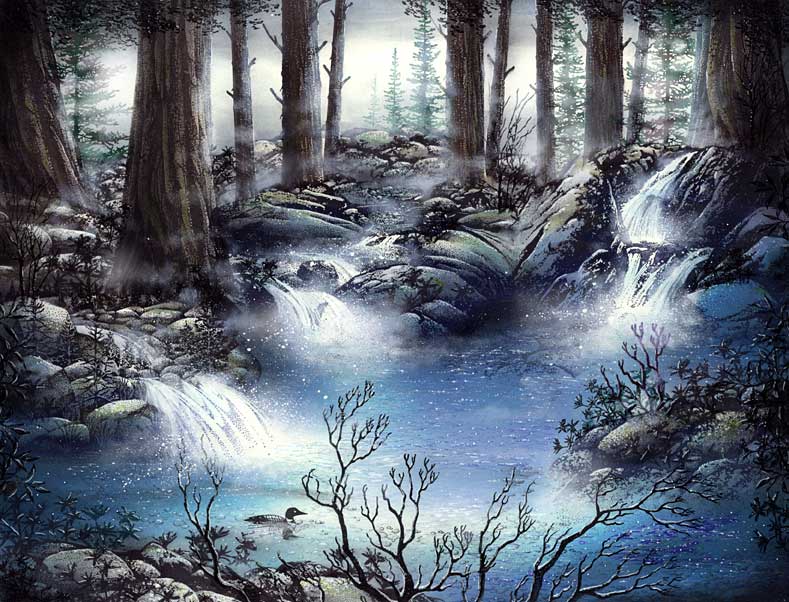
I've splattered some Bleed Proof White* paint (opaque watercolor) on to the base of the waterfalls for added texture and illumination. I took a stiff paint brush, with this white paint, and ran my finger across the brush causing it to splatter on the paper. You have to figure out where these splatters are going to go so that you can loosely aim the paint in your intended area. Additional highlights were added using a white gel pen.